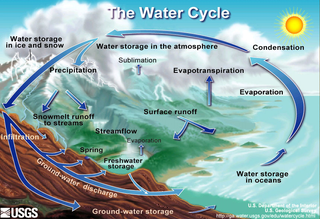This year, the 2011 Thailand flood has been more severe than the preceding annual floods that Thailand faces for a number of reasons. Firstly, the geography of the land in Thailand naturally contributes to the flooding, as Thailand is geographically sloped. Therefore the rainwater from the north flows towards the gulf of Thailand, however where before forests delayed and absorbed the water and acted as natural dams and water gates, the replacement of these forests by cement dams and industrial parks and housing estates for the sake of human development has facilitated the flood as the water has reached uncontrollable levels unanticipated by humans. In addition, the heavy rains have also contributed to the situation.
Currently, the situation with Bangkok is that there are 100 billion cubic meters of water on land that need to reach the sea, and they can go through Tha Jeen River, Bang Pakong River and Chao Praya River. To do this using the river channels only it will take 50 days, and so by using the 1600 square meters of land in Bangkok, they can allow the water to reach chest level at most to relieve outer areas of the floodwaters. However, to prevent flooding the government plan to protect the water levees from flooding inner Bangkok, although despite this Bangkok will still be inundated for one month as we wait for the water to drain out to the sea.
The risk now is the water pressure pushing against the levees, and the fear that the levees will break. However, even professors can only make estimates about the pressure of the water and so the only thing to do is to stay calm and prepare.
This links to syllabus statement 8.4 “the ways in which processes operating within the water cycle affect development” which examines the causes of flooding and drought, and this topic is highly relevant as according to the video much of the flooding has been caused by human intervention in the natural flow of the water cycle. As we have learnt, the water cycle begins with evaporation and condensation and precipitation, but an equally important aspect of the water cycle is the surface run-off and the infiltration and ground-water storage which has now been impaired by the development of human settlements and industrial activity in Thailand. Where before the water could infiltrate to bedrock level through the soil and the tiny gaps in the rocks, the replacement of the soil with cement dams has meant that even with more water the capacity of the dams remain the same and so the human intervention with the natural process has inevitably led to the flooding.
